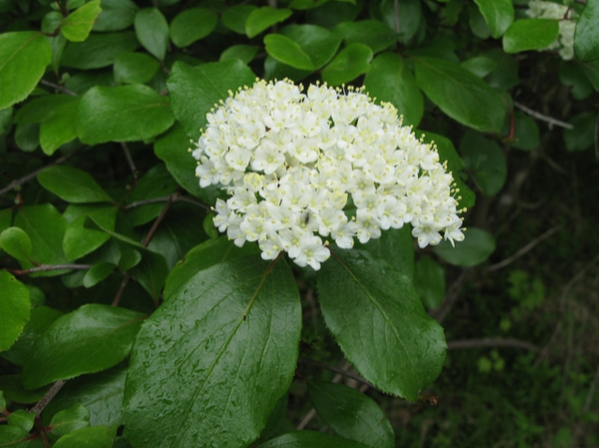- 2024 Native Trees
- >
- Shrubs
- >
- Blackhaw Viburnum (Viburnum prunifolium)
Blackhaw Viburnum (Viburnum prunifolium)
Height: 8 to 12 feet
Spread: 6 to 12 feet
Bloom Time: May to June
Bloom Description: White
Sun: Full sun to part shade
Suggested Use: Wildlife, Hedge, Naturalized Areas
Attracts: Birds and Butterflies
Tolerate: Black Walnut and Clay Soils
Native to: Jefferson County
You have heard of the “Tale as old as time”, well here is a plant as old as time.
In Reverend Joseph Doddridge’s Notes on Settlement and the Indian Wars he wrote “black haws grew on large bushes along the moist‘ bottoms of small water courses. They grew in large clusters, and ripened with the first frosts in the fall. Children were very fond of them. ” Thomas Jefferson had the species had the species added to the list of shrubs to be planted at Monticello in 1771 and was offered in Philadelphia by the Bartrams in their nursery listing of 1793 along with several other viburnum species.
Along Cedar Lick at the Quaker Ridge property south of Richmond, the hillside above the riparian has Blackhaw Viburnum in great abundance.
Blackhaw Viburnum is a large suckering native shrub or small tree that may grow 20 feet tall and nearly as wide. It provides three seasons of interest and is a high-value wildlife plant. The spring flowers are in large white cymes, but are without any fragrant aromas. The Blackhaw Viburnum is an excellent source of nectar for bees and pollinators.
The flowers yield to a crop of berries which mature to purplish-black. The berries are highly desired by both humans and birds and are about 1/3 inch in diameter. For best fruiting multiple plants are encouraged. The plant is a host species to 77 unique species of butterflies and moths. Its dense branching also usually guarantees at least one bird nest within the shrub as well.
The Blackhaw Viburnum can grow multi-trunked to single stem, and has a desire to want to colonize. The leaves of the shrub resemble those of wild cherry trees and can stand out against the backdrop of the landscape. ■






